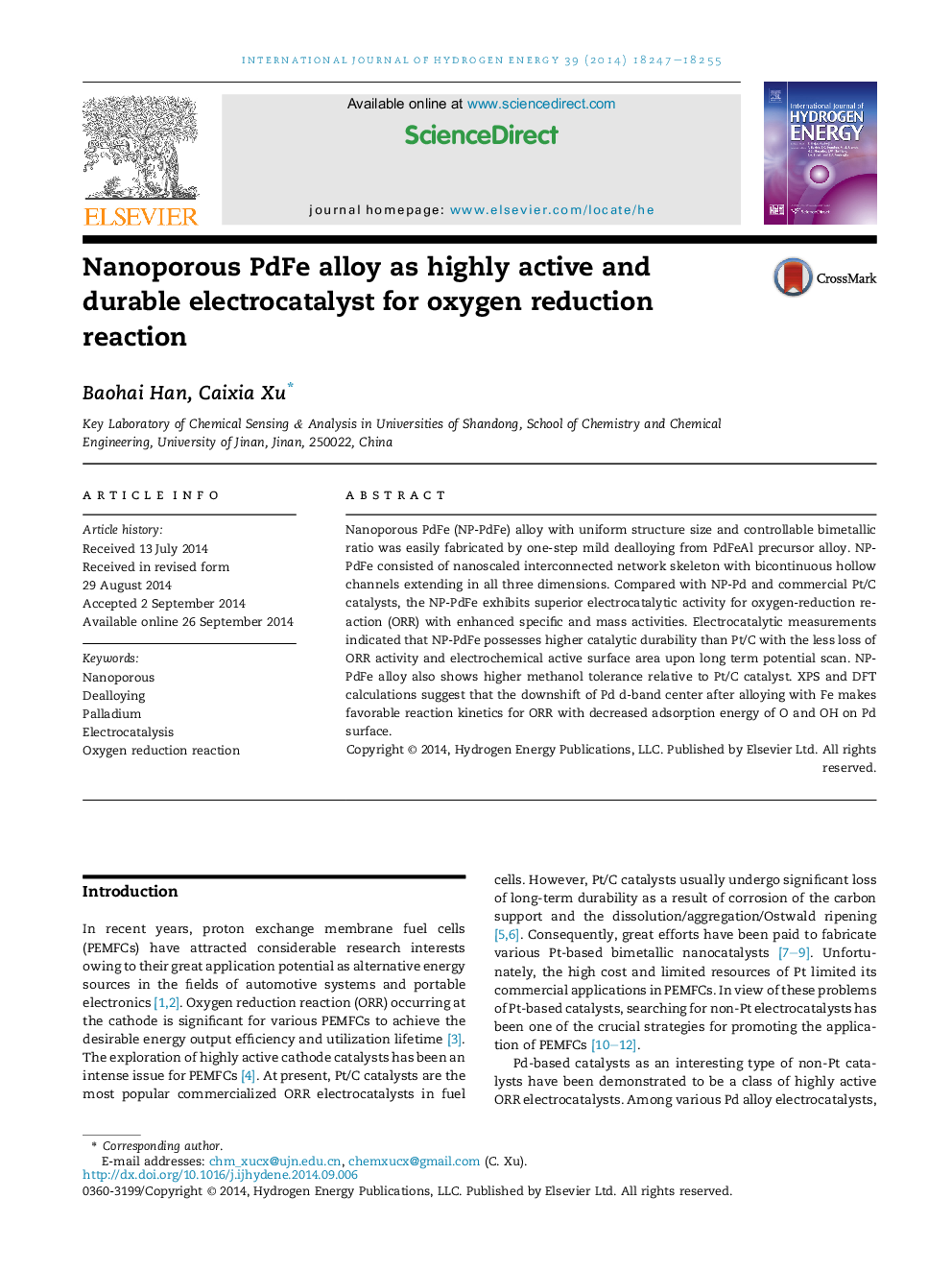| Article ID | Journal | Published Year | Pages | File Type |
|---|---|---|---|---|
| 1280834 | International Journal of Hydrogen Energy | 2014 | 9 Pages |
•NP-PdFe is fabricated by dealloying PdFeAl alloy in mild alkaline medium.•NP-PdFe has bicontinuous hollow channels with uniform structure size.•NP-PdFe exhibit much higher ORR performance than Pt/C catalyst.•DFT calculations show that alloying Fe with Pd modifies the ORR reaction kinetics.
Nanoporous PdFe (NP-PdFe) alloy with uniform structure size and controllable bimetallic ratio was easily fabricated by one-step mild dealloying from PdFeAl precursor alloy. NP-PdFe consisted of nanoscaled interconnected network skeleton with bicontinuous hollow channels extending in all three dimensions. Compared with NP-Pd and commercial Pt/C catalysts, the NP-PdFe exhibits superior electrocatalytic activity for oxygen-reduction reaction (ORR) with enhanced specific and mass activities. Electrocatalytic measurements indicated that NP-PdFe possesses higher catalytic durability than Pt/C with the less loss of ORR activity and electrochemical active surface area upon long term potential scan. NP-PdFe alloy also shows higher methanol tolerance relative to Pt/C catalyst. XPS and DFT calculations suggest that the downshift of Pd d-band center after alloying with Fe makes favorable reaction kinetics for ORR with decreased adsorption energy of O and OH on Pd surface.
Graphical abstractNanoporous (NP) PdFe alloy with uniform structure size and controllable bimetallic ratio is fabricated by selectively etching PdFeAl alloy, characterized by three dimensional interconnected nanosponge structure with the ligament size around 6 nm. NP-PdFe alloys exhibit superior electrocatalytic activity and catalytic durability for the oxygen-reduction reaction with much higher specific and mass activities compared with NP-Pd and Pt/C catalysts.Figure optionsDownload full-size imageDownload as PowerPoint slide
